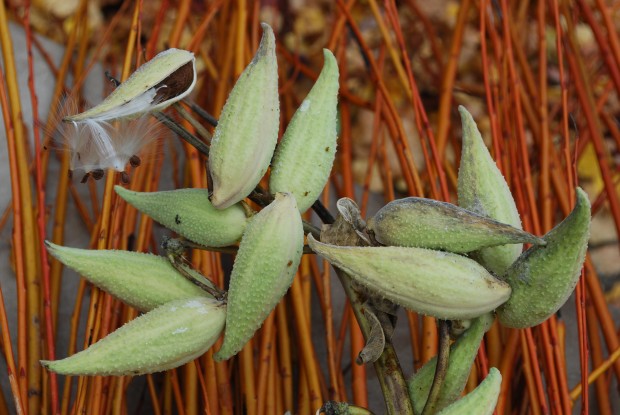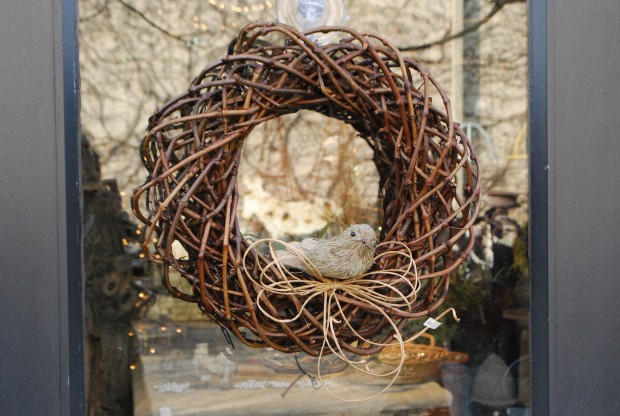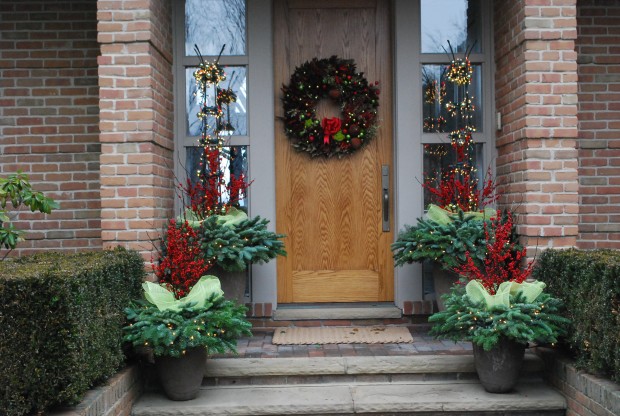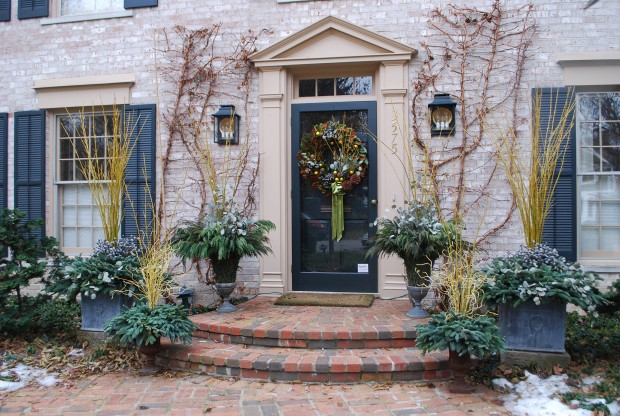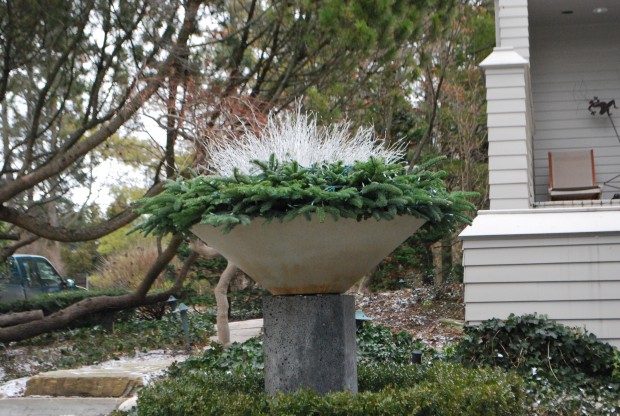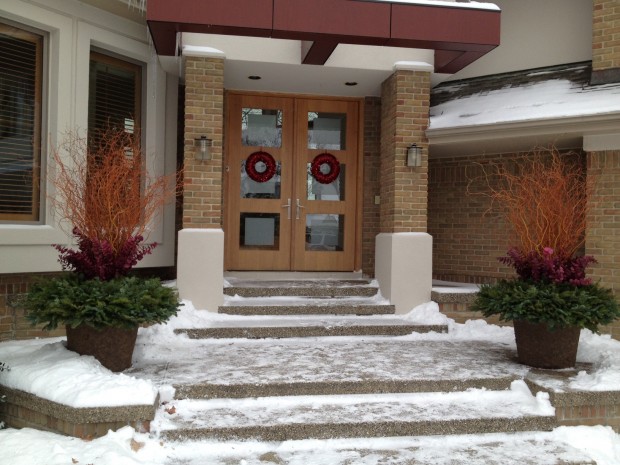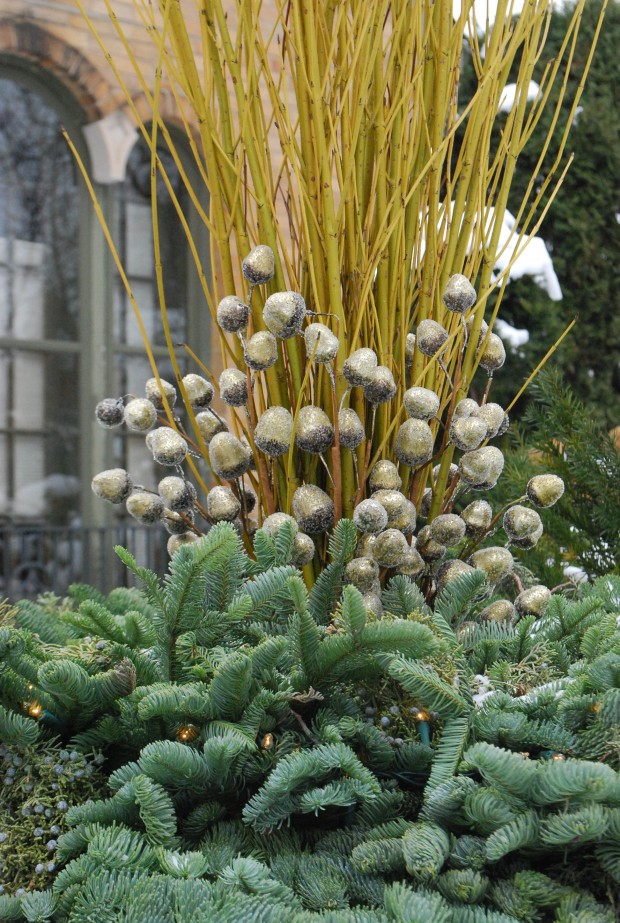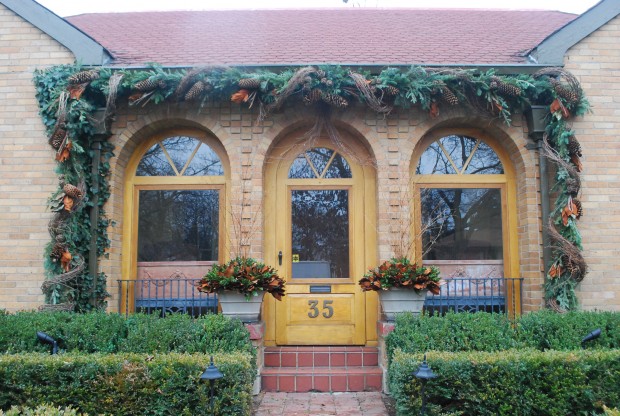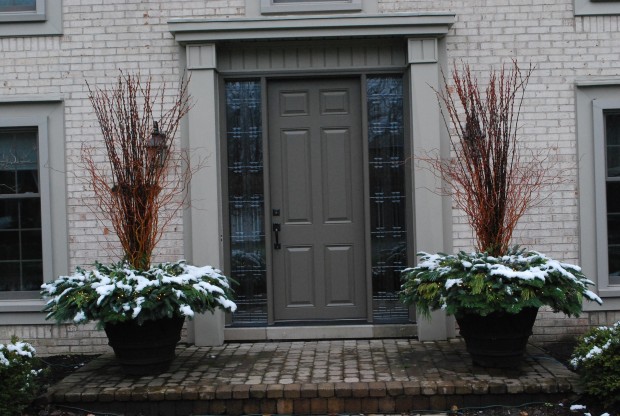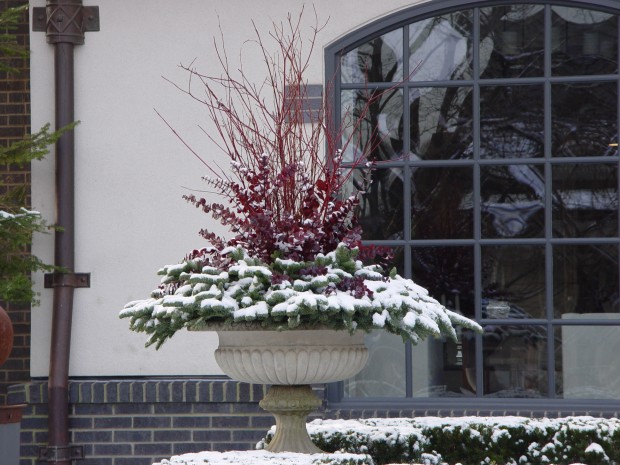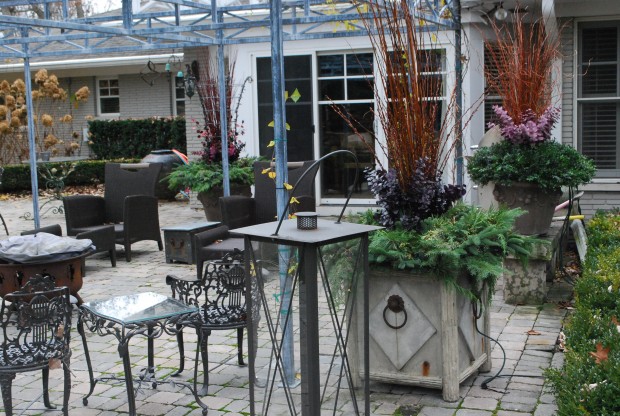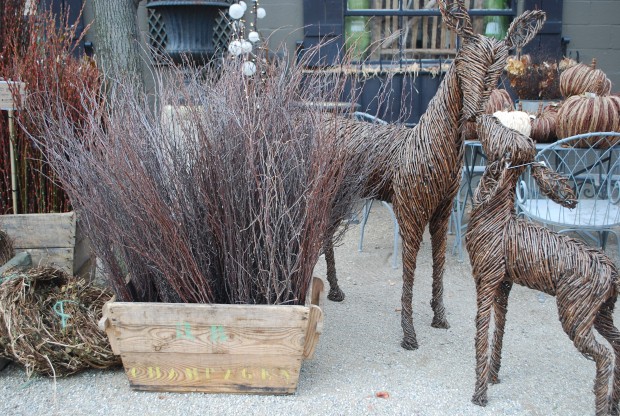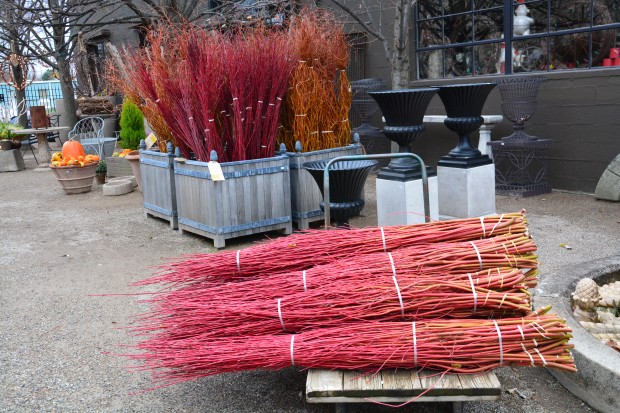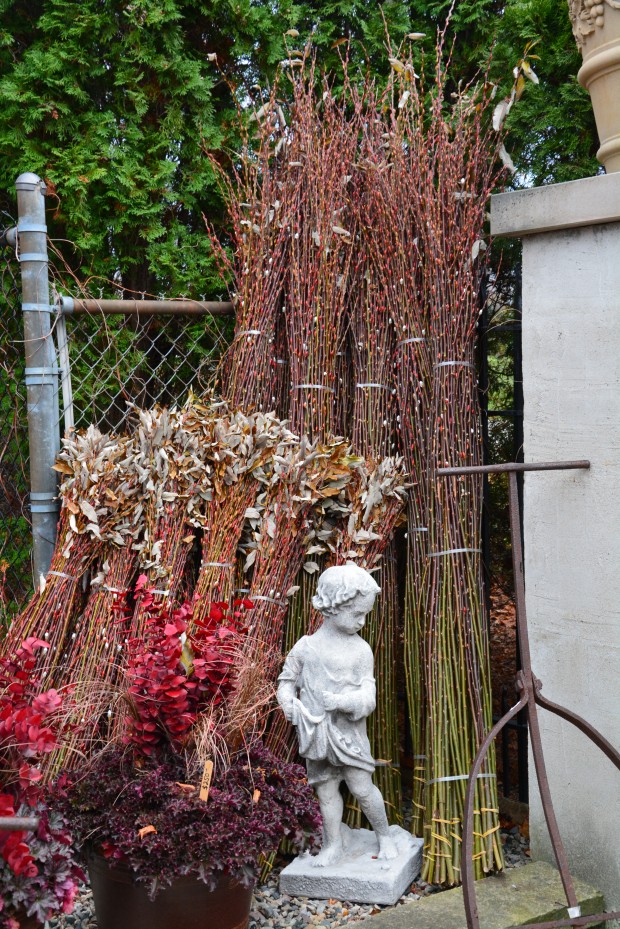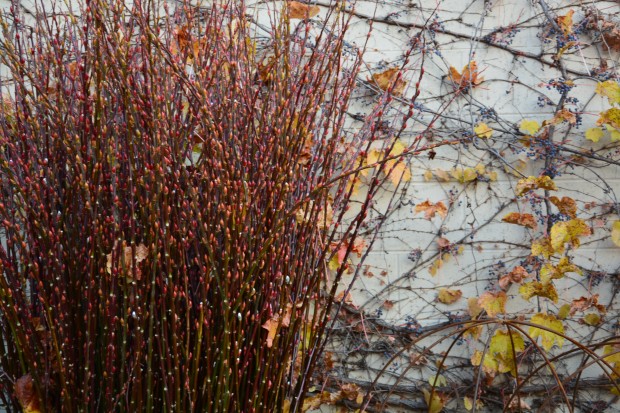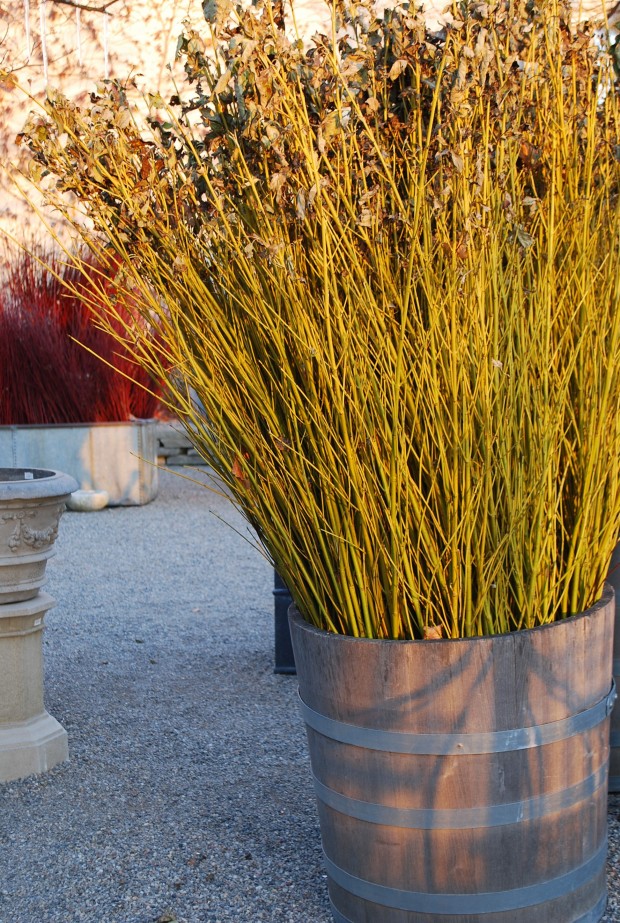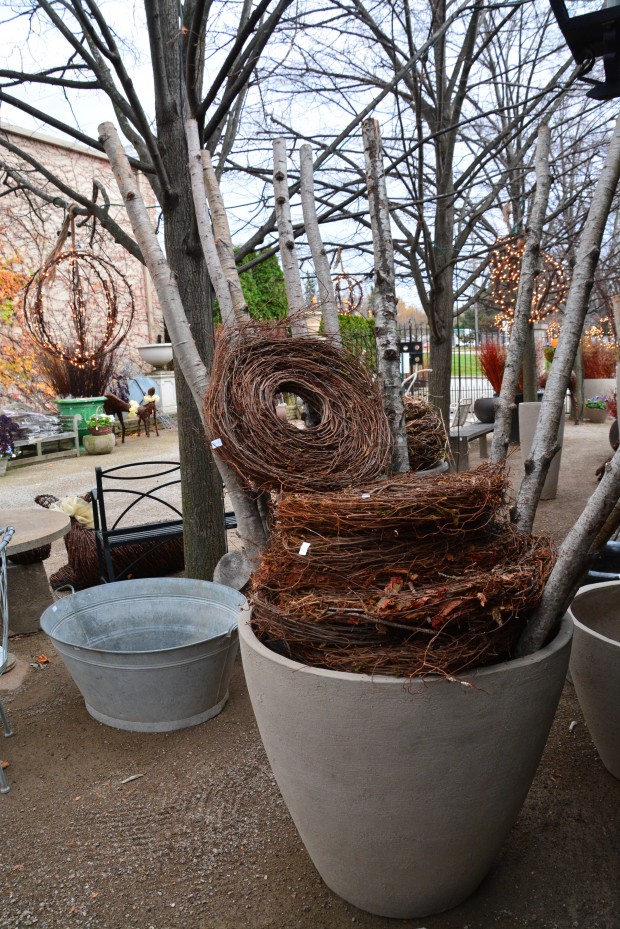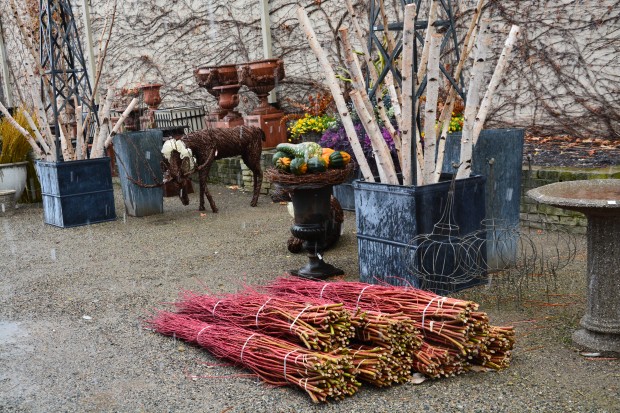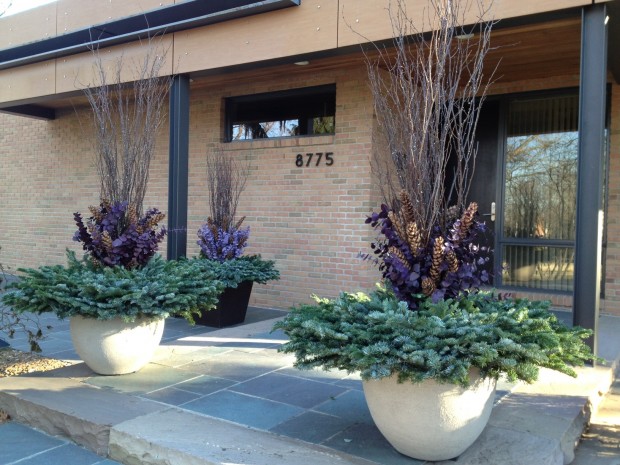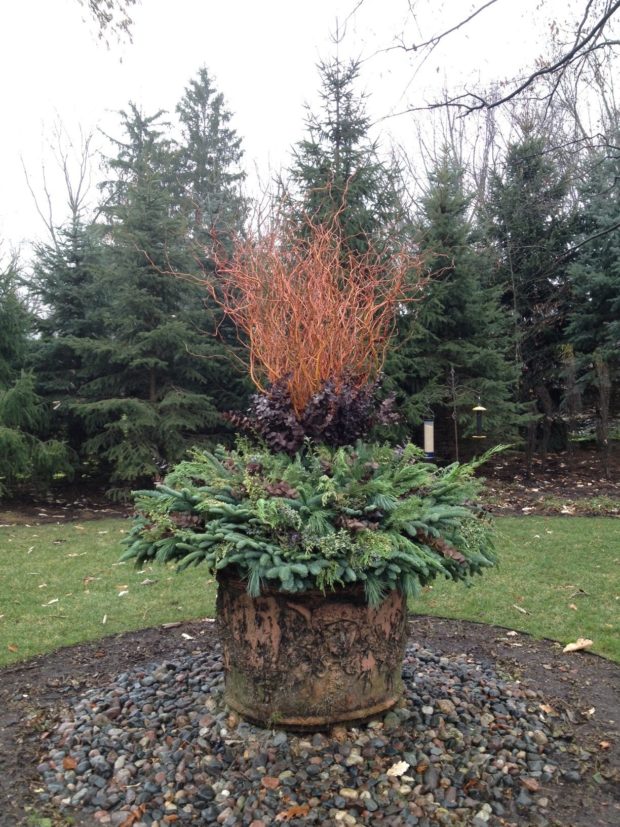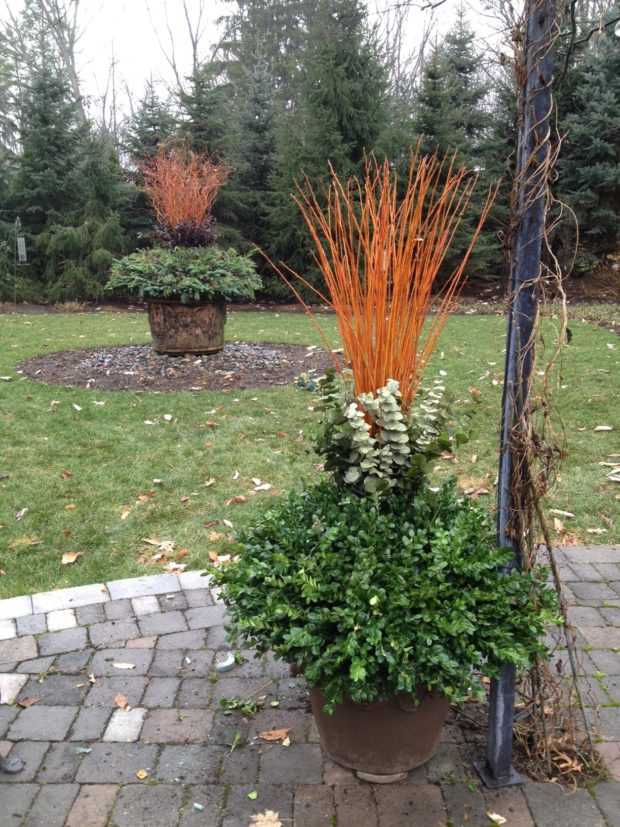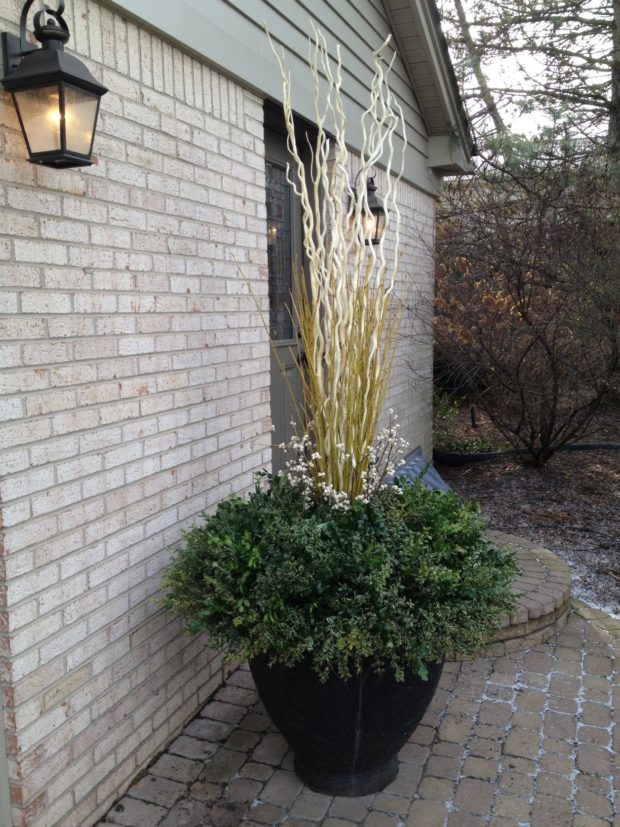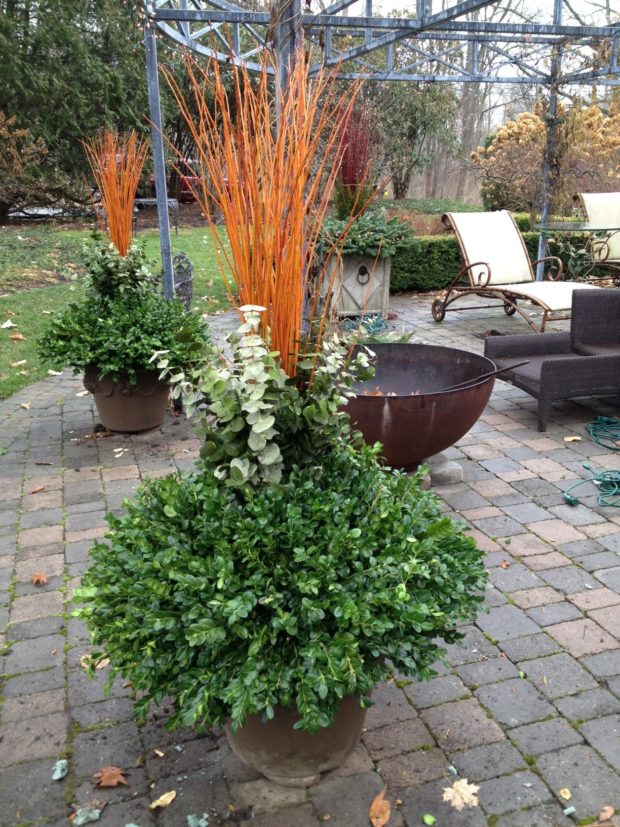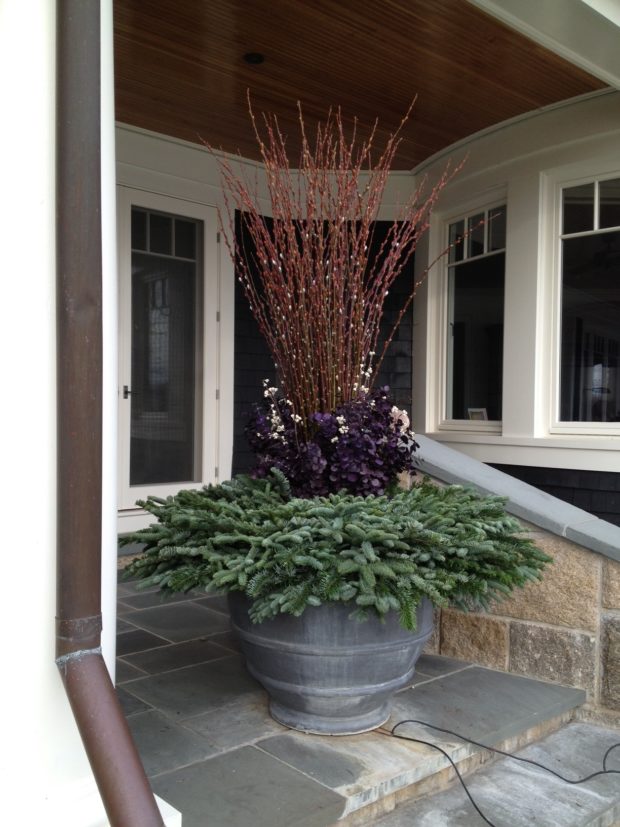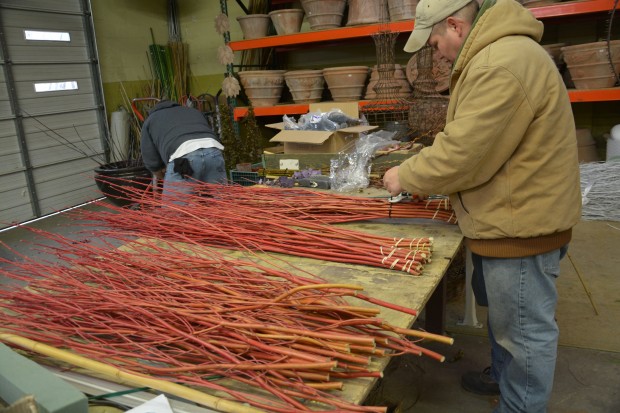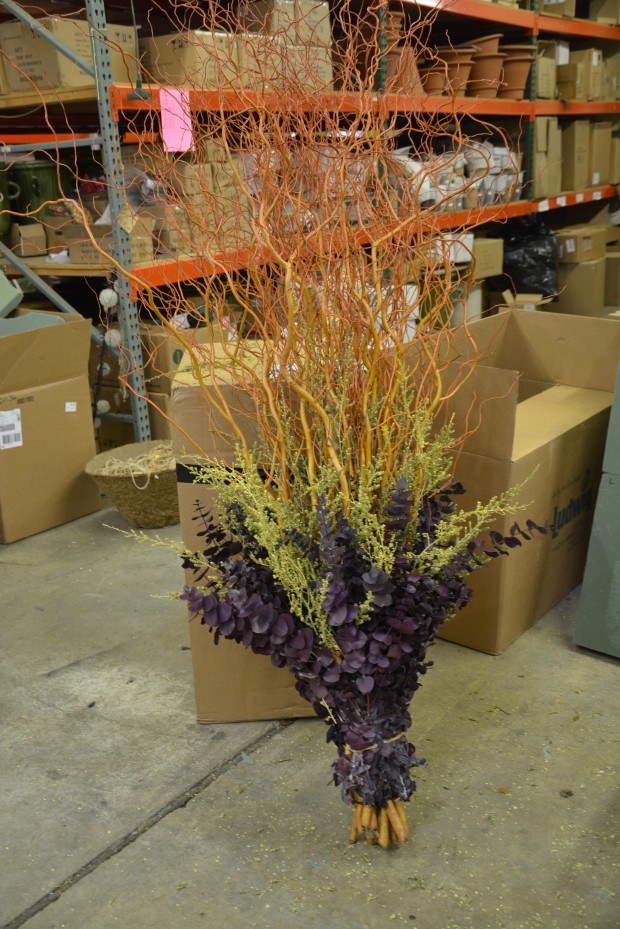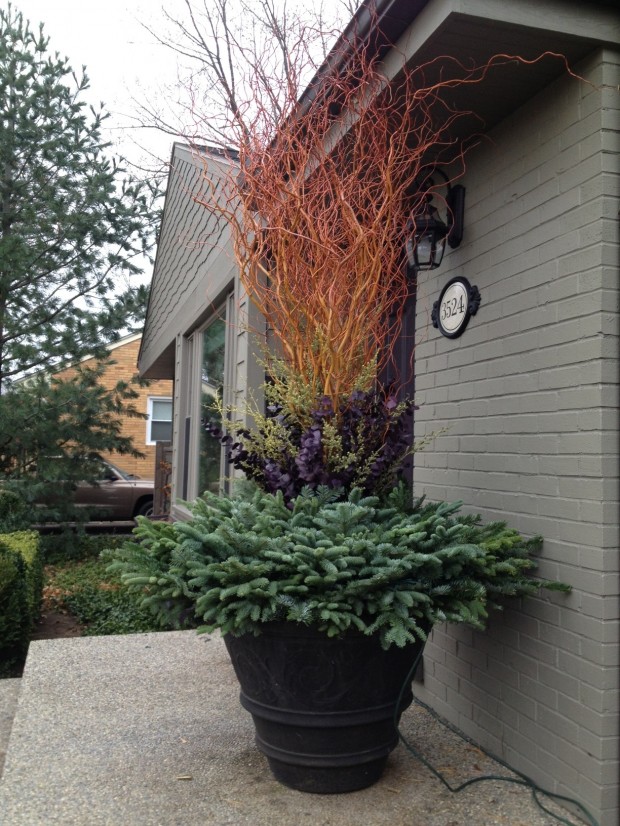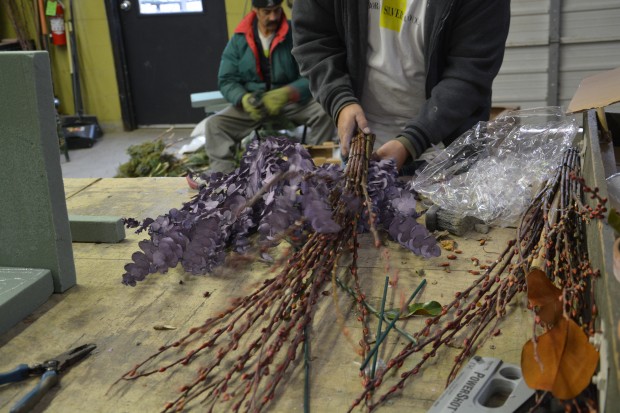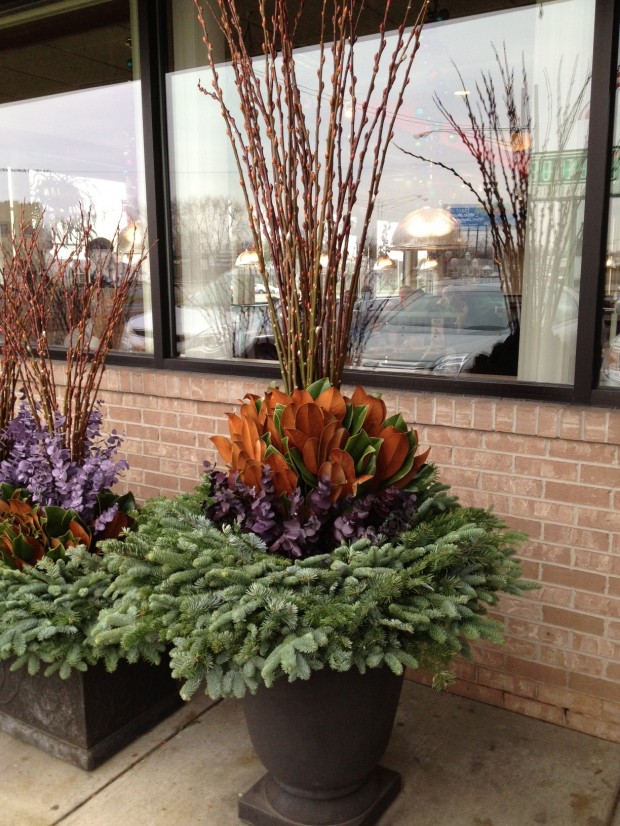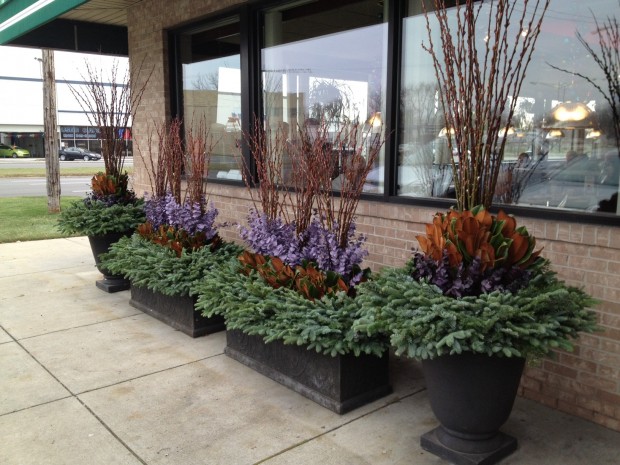Let’s suppose you have a great collection of materials. A truckload of one gallon pots of wildflowers. 50 perennials of 5 kinds in the trunk. 2 flats of groundcover. 10 flowering stems from the garden asking for a vase. A palette loaded with brick. 5 yards of compost. A box of tulip bulbs. A small tree in the markdown lot at a local nursery. The remains of the branches from a dead tree. A truck load of fallen leaves. A cutting from a rose. A pack or a pound of seed. The trimmings from a boxwood or yew hedge. The log rounds from an old tree that had to come down. A collection of galvanized buckets. The cuttings from a rosemary plant. All of those materials may be asking for something to be made for the garden.
 Great materials fuel any great garden project.
Great materials fuel any great garden project.
 An armload of stalky cuttings from perennial garden in the process of being cut back for the winter might have a place in a winter display. Coming up upon the winter season, what can be harvested from the landscape may make the long winter easier to bear. Great materials are also readily available from your local farmer’s market. Our market features birch poles, red twig dogwood branches, dyed integrifolia, and pine cones. The natural materials available come the end of the gardening season will be the mainstay of my winter containers.
An armload of stalky cuttings from perennial garden in the process of being cut back for the winter might have a place in a winter display. Coming up upon the winter season, what can be harvested from the landscape may make the long winter easier to bear. Great materials are also readily available from your local farmer’s market. Our market features birch poles, red twig dogwood branches, dyed integrifolia, and pine cones. The natural materials available come the end of the gardening season will be the mainstay of my winter containers.
The genius of natural materials can drive great design, and great work. Any natural or living material that happens to come into my arms is a call to make something of it.. Making something of a collection of plants, a pile of dirt, or a group of materials, is one way to describe a gardener. The byproduct of making a garden is an opportunity to repurpose materials that can carry on and delight into the next season. In the late fall, gardener make plans to endure the long winter. Making something beautiful of the garden harvest will make the winter easier to bear.
 The gorgeous cut stems from the dogwood and willow, the garden and the forest floor or the field next door-what will you do with them? These materials are asking for an expression from you. To follow-a few ideas. My ideas-take from them what you will. Go on to take those materials, and interpret them how you will. To follow, some stick works that might inspire you to create something all your own.
The gorgeous cut stems from the dogwood and willow, the garden and the forest floor or the field next door-what will you do with them? These materials are asking for an expression from you. To follow-a few ideas. My ideas-take from them what you will. Go on to take those materials, and interpret them how you will. To follow, some stick works that might inspire you to create something all your own.
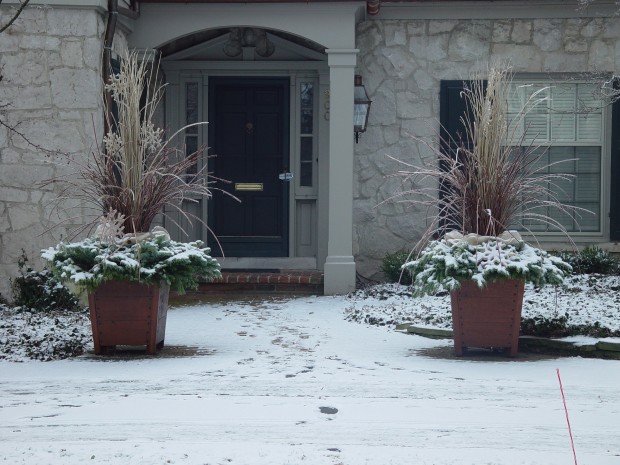 stick stacks
stick stacks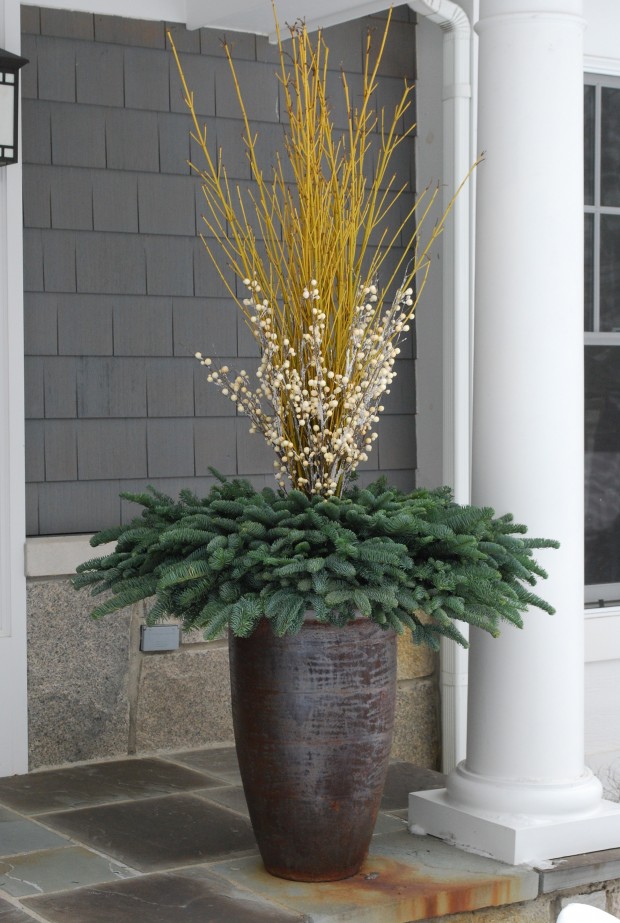 yellow twig dogwood
yellow twig dogwood
Michigan holly
